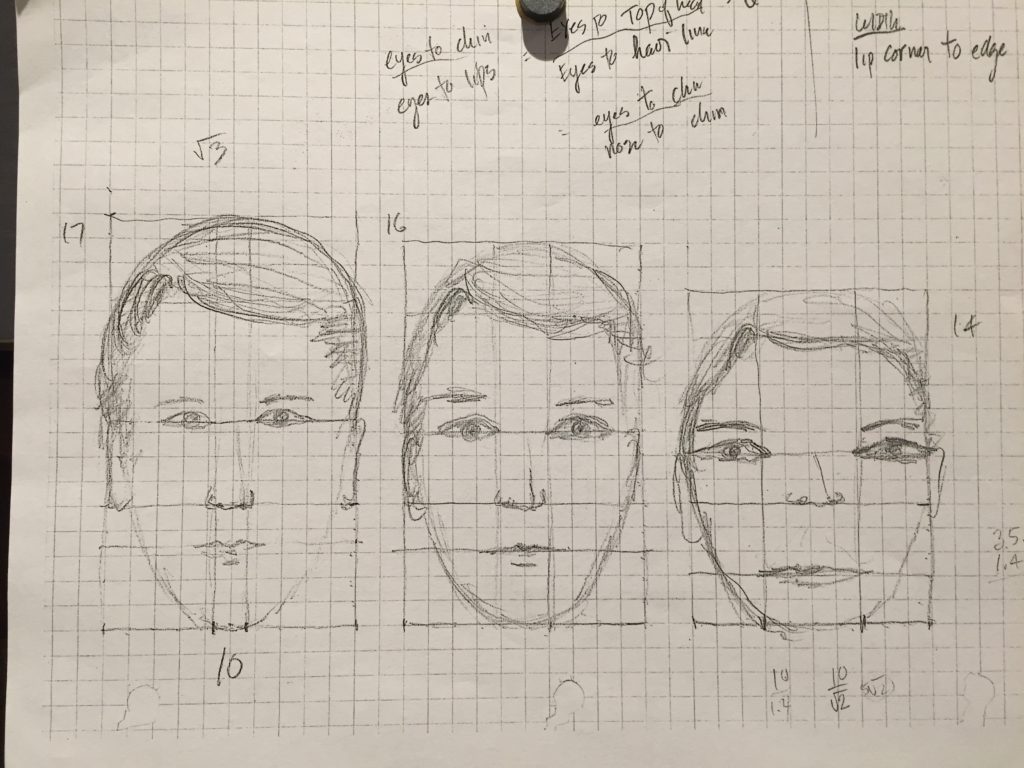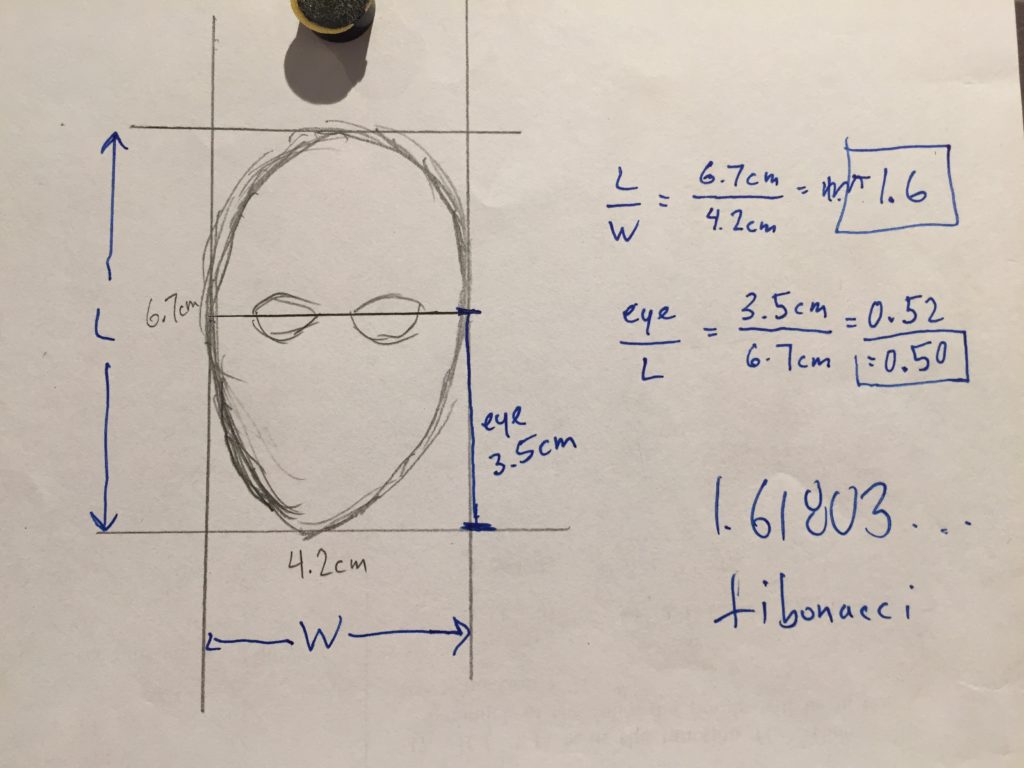The study of the human face is great place for the golden ratio, and thus also similarity. As has often been the case lately – I need to pause and say that this activity was created my incredible colleague Dave Casey who is tour de force of resources, ideas, and inspiration in the math-art intersection.
This activity fits a human head into a primary rectangle (the rectangle that encloses the shape) that is a golden rectangle. I’ve done this activity before exactly as the worksheet lays out. I did the origami face above just for fun a couple days ago and enjoyed it a lot. I liked that it didn’t have any lines to erase and had a cool, kind of 3D look to it. But the worksheet itself doesn’t talk about folding paper, that’s an element I added. Here are a couple things you need to consider for adding that element:
- Mountain fold the vertical fold in the middle of the face. This line is not in the worksheet but it allows the nose line to come out a little bit. (mountain folds are when you fold away from you and it looks like a mountain, valley folds are when you fold towards yourself and it looks like a valley)
- Alternate mountain and valley folds. So in the image above the eye line is a valley fold, so the nose is a mountain fold, and the mouth is a valley fold.
- I used the height of a regular piece of 8.5X11 printer paper. So the first fold is actually the one needed to make the paper into a golden rectangle. This is also the first thinking moment as the students need to figure out how wide the paper needs to be if the height is 28 cm (or 11in). It could be fun to also initially play on intuition and just hold up a piece of paper and ask them if they think it is too narrow, too wide, or just perfect to fit a human face.
- During the folding I was thinking of the forehead line and mouth line as a reflection of each other. Origami is great for folding reflections and it opens another avenue for review during this lesson.
You might do the face with folding first and then have them do the activity exactly as defined in the worksheet. Notice the high ceiling element where they make slight changes the ratios of the primary rectangles they fit the face into, and see how they effect the human face. Here’s the results:
The Goods:
Here are pdf’s and Word files for it:
The Hook & The Spiral:
Dave has a great way to introduce this activity that turns the correct proportions into a surprise ending and also brings in stats. He guides the students to drawing a golden rectangle for them to use as a primary rectangle, and then has them sketch a face inside it. Here’s the one I drew when I first observed Dave do the lesson:
Then he has them measure the ratio of the height of the face, to the eye height. He collects all the data and has the students make a box plot. The correct answer of about 0.5 is usually outside the box! People always put the eyes too high on the face. It’s cool because now when you tell them the correct ratio is 0.5 and the eyes are pretty much in the middle the students get this ‘my intuition was wrong, I just learned something, that’s interesting, give me more’ moment.
The Inspiration:
We’ll have to ask Dave for the inspiration to the lesson itself, but my inspiration for wanting to add origami to it comes from this clip from the documentary “Between the Folds” where the Eric Joisel quickly folds the rough form of the human face. This lesson doesn’t achieve the form like Eric was able to do but watching him got me playing around with the idea of proportion and origami. I would still love to have an origami face lesson more similar to what Eric created. Any one?
I did learn some sad news while looking for the clip – Eric Joisel passed away in 2010. Looks like the world lost a true artist. Here is the New York Times article on his passing.
salute,
-B



